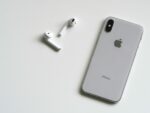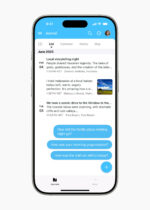Apple this week relaxed the prohibitive clauses in its newly published App Store Review Guidelines, which effectively closed the platform to all but Apple developers. The revised agreement offers developers more options, but one iPhone development expert says those options might not necessarily be better ones.
In the guidelines, restrictions on the tools that developers can use to create apps for the iOS have been eased, meaning developers can use Flash to create applications sold in the App Store that are compiled to work on the iPhone with Adobe Packager software.
In a news release, Apple stated that although the restrictions on tools have been eased, iOS applications cannot download code, such as a Flash player. “This should give developers the flexibility they want, while preserving the security we need,” the company wrote.
Lee S. Barney, a professor of information technology at Brigham Young University-Idaho and creator of the QuickConnect JavaScript framework, said the changes will make users of the Adobe tool suite happy—at least initially.
“As time goes by and they find their applications don’t quite run well, it may lose some of its luster,” he said. “Code generators and cross-compilers have always been troublesome in the industry. It can take quite some time to work out the size, speed and reliability issues. Sometimes it isn’t even possible.”
Nathan Eror, an iPhone and iPad developer, trainer and author with Free Time Studios in the Houston area, said the move “gives developers more flexibility to innovate and compete on the platform.” He added that the new transparency in the App Store approval process is perhaps more important than the tools decision.
“The new ‘rules’ document is a very useful guide for developers,” he said. “It removes the black box problem of the approval process, and developers have little reason for having their apps rejected now.”
Eror said Apple’s decision is part of the evolution of the App Store. “As the market for apps matures and app consumers become more sophisticated, there is less need for hand-holding. Consumers will demand better apps, and they will get better at recognizing quality in the store.”
He went on to point out that “the ‘app’ as a product is only a 2-year-old concept, and Apple has been very careful in shaping this new market in its image. In the end, Apple wants to protect its brand and make money, and it does that by getting more people to desire and buy its products. More awesome apps sells more iPads, iPhones and iPod Touches.”
Barney speculated that the change is a result of pressures from several fronts, with “the legal and social fronts being the most important.” It has been widely reported that the U.S. Federal Trade Commission had begun to take a look at Apple’s restrictions as an unfair business practice.
“Apple, and many other tech companies, have to abide by the legal competitiveness laws,” said Barney. “I think they may have seen that they were in a no-win situation in this respect… Additionally, Apple has been hit socially with appearing as ‘the bad guys.’ “
Eror dismissed the idea that Apple had to make a move to keep developers from moving to Google’s Android platform. “Apple is trying to sell more devices and distribute more software. The mobile device market as we know it now is so new that it’s better for Apple to focus on growing the market and making awesome products. It’s much easier to create a new smartphone user or a new tablet user than it is to convert an existing user to a new platform.”
Barney agreed that the decision had little to do with Android, because that platform is already lagging. “Having used both tool sets and watched many newcomers use both, I can say that Android is at a large and distinct tool-set usability disadvantage,” he said.
“One of the biggest problems these new developers face is that it is slower to develop and then test on the Android emulator than develop and test on an actual Android device. That really slows down all Android application development. Other than security flaws in the Android development model, this slow development cycle is the largest drawback to developing Android applications.”
He continued: “I have watched many new developers create the same application on the Android and Apple tool sets side-by-side using comparable machines. In the time that the Android developers need to make a single change and run it to see the changes, the Apple tool set users can make 10 changes and see the results 10 times. The Android tool set is much harder to use from a new developer point of view than the Apple tool set. It is harder to install, is less stable when writing code, and the emulator is finally working most of the time for most people.”
As for writing applications for the BlackBerry and Nokia platforms, Barney said, “Going to the dentist is more fun than creating for those two platforms.”






